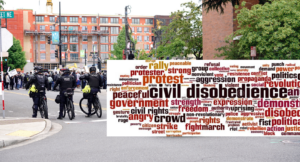- What were the cultural significance and the political implication of the Pfeffer-korn-Reuchlin debate?
Answer: Pfefferkorn, a Jewish convert, had embarked on a campaign. Reuchlin’s image has brought a significant change. This early work is notable for claiming the prime importance of the Hebrew books. In order to secure the imperial permission, he restarted the campaign against the Jewish culture. He is the champion of the new renaissance humanist. Reuchlin also questions whether the Christians has the right to burn Christian books. Jews and Christians were the citizens of the Holy Roman Empire. Reuchlin argument was a mixture of tolerance and prejudice. Reuchlin as a faithful Christian, insisted Jews that Jews showed signs of improvement.
- Why did some of Martin Luther’s followers accuse him of being a “Judaize” as Luther entered into conflict with the Catholic Church?
Answer: Luther is a young professor of theology. Martin Luther is the leading light in the protestant reformation. The scholar tradition of Martin sparked a debate and posted their ideas in a public place. Many Christian were outraged by the Pope’s actions. The truth of the matter was that Martin did not like the Catholic Church he Apostle Paul’s day there was a group called the Judaizes who got many things right. They believed in the value of the law, the resurrection from the dead, the need for faith in Christ, that Jesus was the Messiah and that he was divine. At the s the surface level, they support Luther and inwardly they destroy the freedom movement.
- What did Luther intend when he preached about freedom and what did the Germanic peasants understand?
Answer: Martin Luther wanted to preach the freedom movement. He gives all theca basic rights to the black people. Martin Luther is a German professor of theology, priest, and monk. Luther comes to reject several teaching and practices of the Roman Catholic Church. He strongly disputed his understanding of the Catholic view on indulgences, that freedom from God
- What was the importance of the Diet of Augsburg in 1530 for Catholics, Protestants and Jews in the Holy Roman Empire?
Answer: The diet of Augsburg is the Holy Roman Empire in Germany in the city of Augsburg. He decided on Emperor Charles V to decide the three issues. The emperor defended the empire against the Turks, implemented the welfare and currency policy, and approve the disagreement over Christianity.
- How did Holy Roman Emperor Charles V respond to the requests of Rabbi Joseph ben Gershom (Jose of Rosheim) and how was his response contradictory?
Answer: Jose of Rosheim was the great advocate of the German and Polish Jews during the reigns of the Holy Roman Emperor. Emperor Charles emperor V, the new head of the Holy Roman Empire. He saw Luther taken as a serious threat. Charles was particularly by Luther’s inconsistent. Christians are only guided by their understanding of the Bible. Christian rather ignore the order of the Pope. So they ignore the
- What were Martin Luther’s attitudes towards the Jews in later life and what accounted for his?
Change of views?
As a German Reformation leader Martin Luther. Luther’s attitude toward the Jews took different forms during his lifetime. . Luther has the polemic against the Jew people in medieval. The declaration against the Jews did not stop Luther from writing. Jews paid little attention and there is a quarrel between the Jews and Christian. Luther views about Jews is not complicated. Luther reading avoids the importance of liberty, following one’s conscience and the reason of every prospect.
- How was Martin Luther able to avoid the fate of Jan Hus a century earlier?
Answer: As the early reformer John Huss was about to be burned at the stake, he prophesied Martin Luther. So Martin Luther avoids the fate of Jan Hus.
- What was the official theological position of the Catholic Church at the Council of Trent regarding the Jews and deicide and why was it not put into practice?
Answer: the religious church is based on religious belief, false claims against nudism and religious anti-Semitism. Sometimes, it is called theological antisemitic. Jews could not keep Catholic Christian combines and were forbidden to bless the fields of Catholics. The threat comes from the Ottoman Empire. The conflicts between the Catholics and prime tenants become densified. Luther was primarily item. Retested in converting t
- How did the Catholic Church’s struggle against heresy in the 16 century impact the resolution of the disagreement between the pope and the archbishop of Toledo in 1547 and the following decades?
Answer: The Catholic Church struggle against heresy in the 16th century to resolute the disagreement between the pope and archbishop of Eland in 1547. Reform coincided with the highly personal struggle of Martin Luther, it is with the combination of the 15th century made the popes of the 16th century.
- Which decisions in the Papal States in the second half of the 16 century signified a departure from the medieval papal stance toward Jews?
- What measures did Doña Garcia Mendes Nazi take to save the Jews of Ancona? En rope seeking a safe haven and eventually found an ottoman empire. Where she converted to juridic. She and her family help some of them escape Portugal and others. The company were for the company. She arranged a meeting in Istanbul with Sulieman and pointed out some prisoners live in the ottoman empire and take responsibility of the prisoner’s protection.
- What was so significant about the letter of Suleiman the Magnificent to Pope Paul IV?
Answer: Suleiman was so taken with the city of Jerusalem and its plight. In 1950, popes were not supposed to protect the jews. Paul issued a bull in which he stated that it is absurd and inconvenient that jews were their own faults condemned by God to eternal slavery.
- What new meaning of toleration gained currency in the Netherlands and how did it originate?
The Netherlands” literally means “lower countries”, influenced by its low land and flat. The Netherlands has a long history of social tolerance and is generally Part of the southern provinces became de facto colonies of the new colonies. Netherland was a 17th-century colonial province of the Seven United Netherlands



